We propose here what seems to be a novel interpretation of this famous Leonardo Da Vinci painting: we claim that there exists a coherent/consistent way to interpret the piece as a metaphor for Christianity, emphasizing in particular the relationship between superficial religious aspects, and deeper spiritual matters.
We start by arguing that Jesus is in fact looking at the Source of Light, from which we draw a series of consistent observations.
This has been generated from \(\LaTeX\) by Pandoc; the corresponding pdf file looks better.
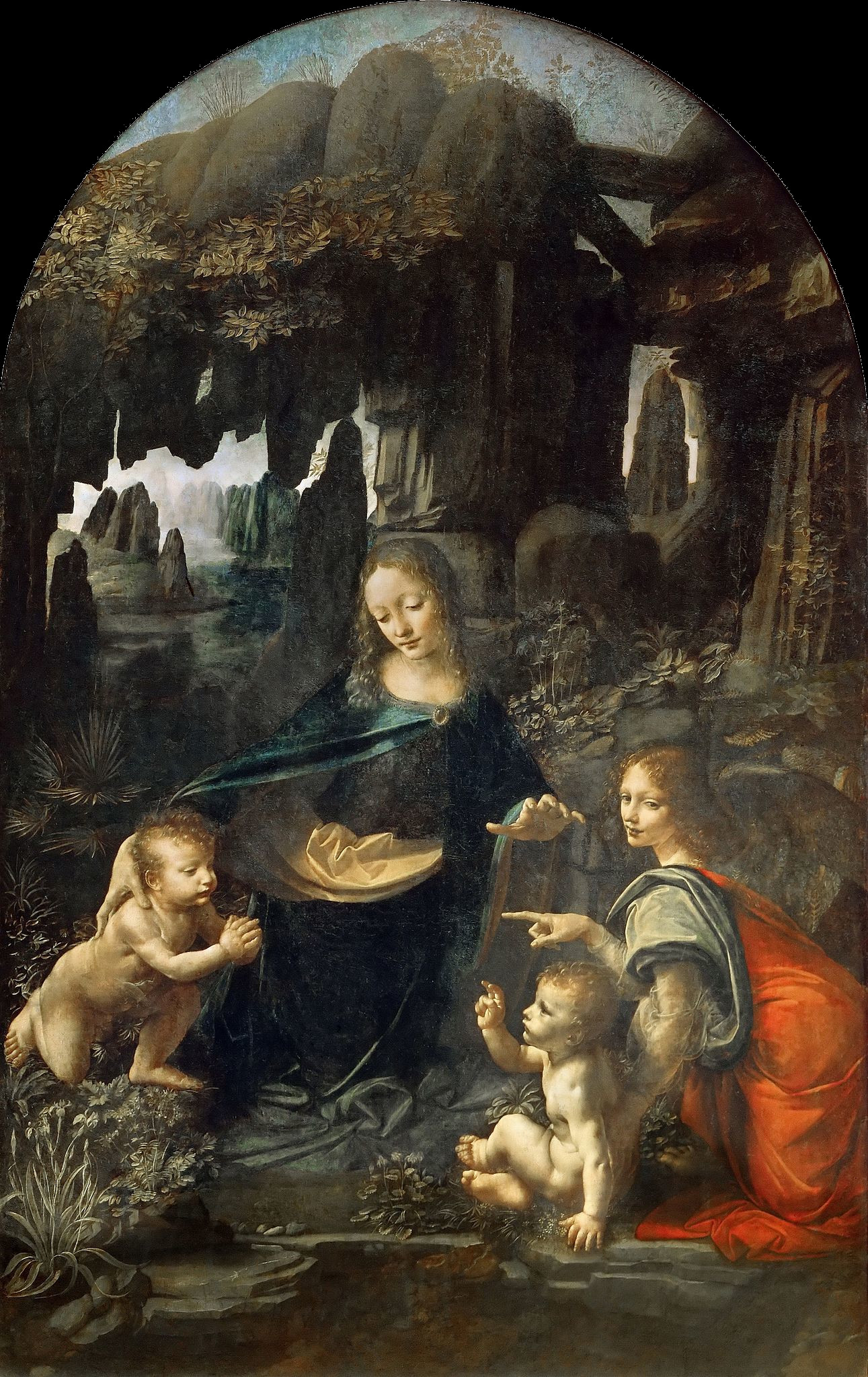
A key observation
Consider first where Jesus, the bottom right child, is looking at:
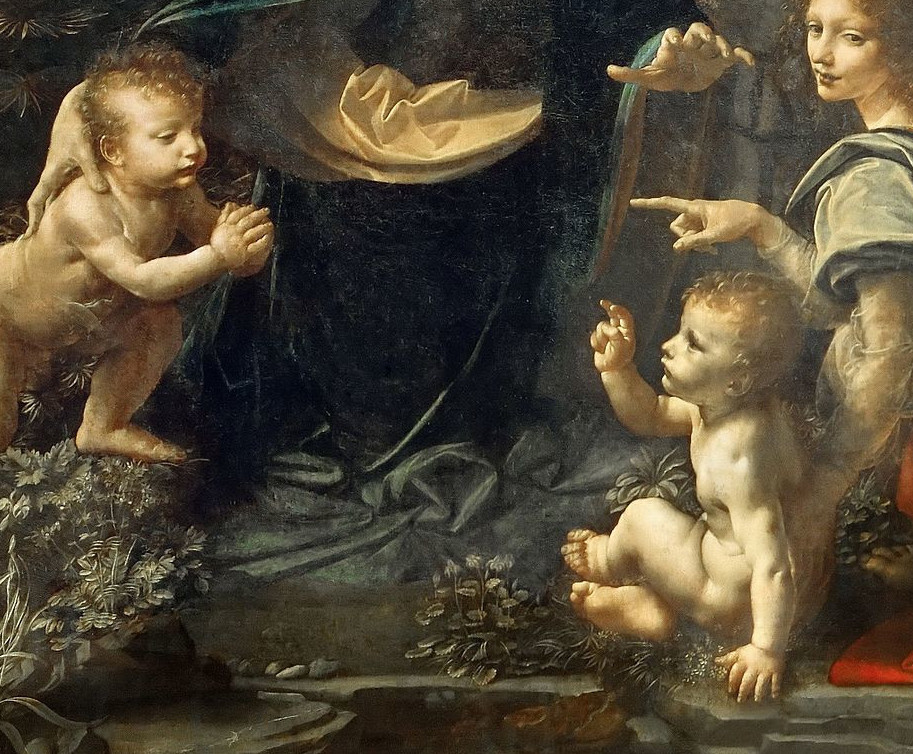
At first sight, one may think that he’s looking at John the Baptist
(the second child). But upon closer investigation, paying attention in
particular to Jesus’s chest and eyes, we can see that he’s looking
beyond.
More precisely, he’s looking in the direction of the Source of
Light – an obvious metaphor for God in a Christian setting – which
can be estimated from the position of highlights and shadow
patterns.
Not only is he looking in the direction of the Source of Light,
but out of the four characters:
He’s the only one doing (allowed/daring to do?) so;
He’s the brightest one: he’s the one reflecting the most light.
This alone justifies interpreting this piece as a metaphor for Christianity, but it gets better.
That pointing finger
The finger is generally thought to be pointing at John the Baptist.
But one has to admit that it’s just far too conspicuous to be this
benign.
Now, from our previous observation, we can deduce that it’s
also pointing beyond John: not directly to the Source of
Light, but below. I’ll come back to this "below" part later.
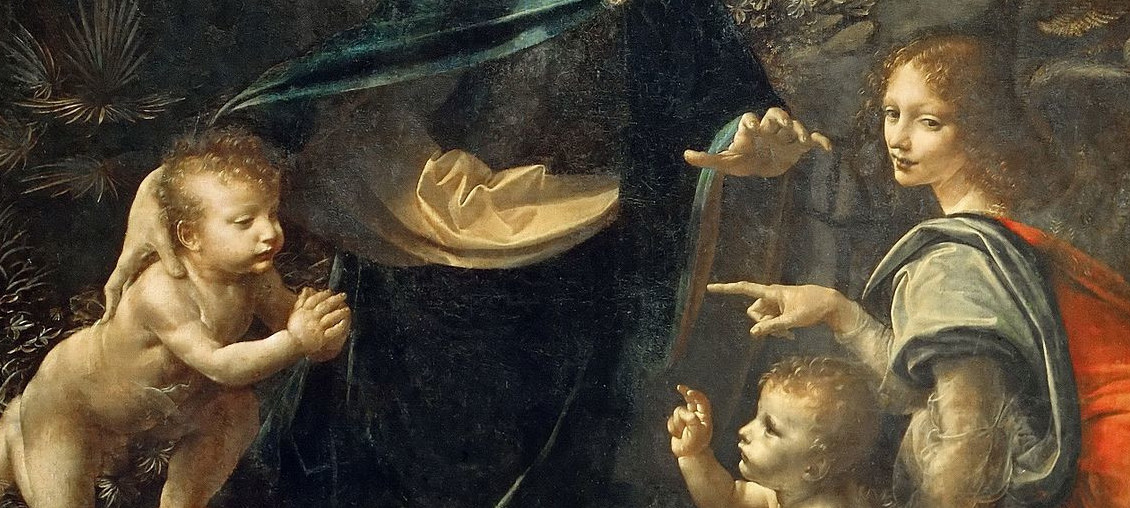
From there, we can draw a web of interpretations.
But first, we need to have in mind a peculiar human flaw: we tend to be
too superficial, too quick to judge. This is true in many domains
(politics, science, relationships, paintings interpretations, racial
considerations, etc.) but especially in the context of religions, which
too often are applied blindly/systematically, to the detriment of deeper
spiritual matters.
Now, the fact that the finger points both at John and
beyond, echoes this previous idea a first time: if us, the viewers,
satisfy ourselves of a superficial look at the piece, we won’t go
further than John, but if we’re being less superficial, and believe that
this distinct clue isn’t there by chance, we may see further.
When a wise man points at the moon, a fool looks at his finger.
– Generally attributed to Confucius, but a similar one exists in Chan "Zen" Buddhism.
This is echoed a second time, in the position of John: he acts as a
worshiper, a religious/superficial act of faith, and partially turns his
back away from to the Source of Light. John is instead looking
at the most intense reflection of it.
There’s a more optimistic take on this point: we could start from the
premise that religions, despite their tendency to be superficially
applied, still allow "sinners", via genuine worshiping, to turn
themselves around, and to "see the Light": Jesus is showing the
worshiper the way.
This superficiality/depth duality is echoed two more times.
First, pay attention to the Virgin’s hands: she’s touching
(superficial contact) the worshiper, while her hand is hovering over
Jesus. The angel, a divine being, is touching Jesus.
Second, look at the background:

There are two main openings: an obstacle stands in front of the right
one, preventing us to see much, while one can see great depth, despite
the obstacles, on the left one. Recall once more that the Source of
Light is placed to the left, so this left/right placement still
feels coherent in this regard.
As a side note, the use of a "phallic" obstacle, in such circumstances,
may or may not be incidental from our mischievous painter, again if we
place ourselves in a Christian setting, and considering some of his
views:
The art of procreation and the members employed therein are so repulsive, that if it were not for the beauty of the faces and the adornments of the actors and the pent-up impulse, nature would lose the human species.
Intellectual passion drives out sensuality
– Leonardo (both quotes)
That is to say, the earthly (superficial) matters blind us to greater
truths.
One more thing: why would the angel’s finger be pointing below
the Source of Light? Why not straight at it? Well, this echoes
the fact that only Jesus is doing (allowed?) to do so: it encourages
humility and reverence from the viewer, who most likely won’t be able to
withstand the vision anyway:
You cannot see my face, for no one can see me and live.
– Exodus 33:20, God speaking to Moses
It’s amusing that the angel displays toward the viewer the same kind
of attention: he’s looking at our chest, not our eyes. Either the chest
is to be interpreted as our essence/character, as if he was testing our
ability to perceive what he’s pointing at: are we as superficial in our
appreciation of religion/this painting as the worshiper, or can we see
the Light beyond?
Leonardo could at the same time be playing with the idea of
God’s omnipresence.
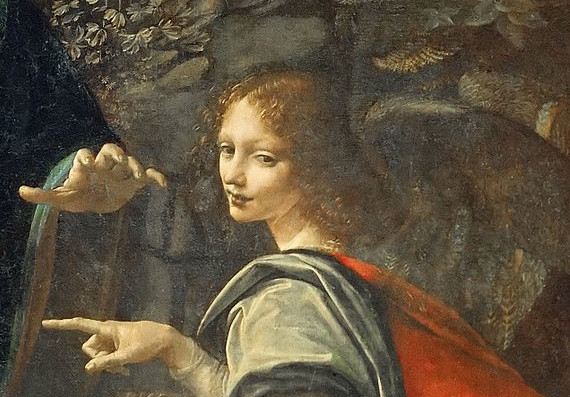
The London version
While our first key observation remains, Jesus is no longer the
brightest character, and there’s no finger pointing anymore.
Now, this is very hypothetical, but one guess could be that the London
version is based on an earlier design (which may still have been
executed after the Louvre’s). The need for a refinement may have arisen
based on people’s perception of the piece: the presence of God wasn’t
obvious enough, hence the need to include a discernible clue, and have
the angel play with the viewer’s perception abilities, as explained
earlier.
The noblest pleasure is the joy of understanding.
– Leonardo
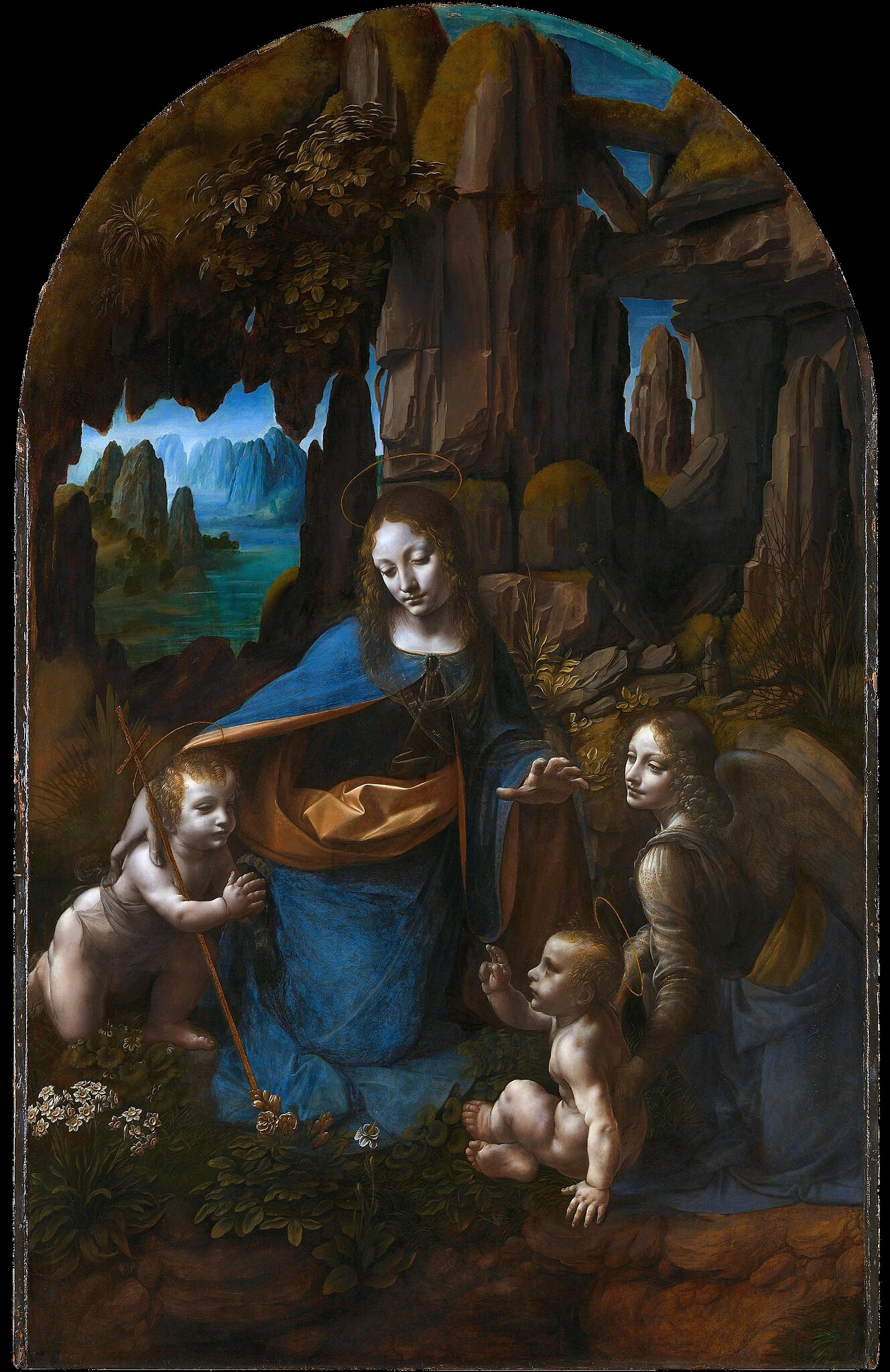
Comments
By email, at mathieu.bivert chez: